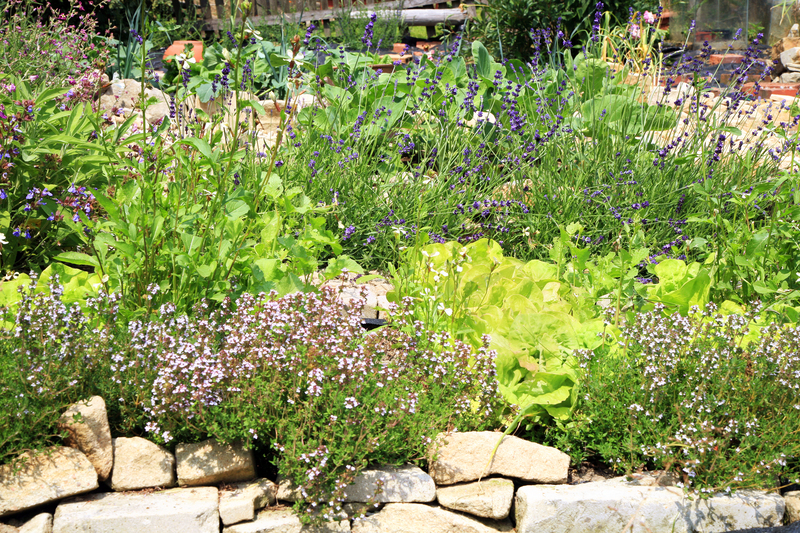Sculpt Your Garden for Serenity with Privacy Landscaping Features
Transforming your garden into a serene sanctuary often begins by integrating thoughtfully designed privacy landscaping features. Whether for urban dwellers seeking refuge from street noise or suburban homeowners envious of a neighbor's deck, privacy landscaping stands out as both a beautiful and functional solution. In this comprehensive guide, we explore how to sculpt your garden for serenity, using the best landscape features for privacy, peace, and distinctive style.

Why Privacy Matters in Modern Gardens
In today's fast-paced, hyper-connected world, our gardens offer precious opportunities for tranquility and mindful living. Privacy landscaping features such as living hedges, fencing, and structural screens help buffer noise, block unsightly views, and establish a sense of safety and intimacy. The demand for outdoor privacy continues to grow, inspiring landscapers and homeowners alike to seek innovative ways to shape private, calming outdoor spaces.
Benefits of Privacy Landscaping for Serenity
- Reduces stress by creating a quiet natural retreat
- Minimizes outside noise and visual distractions
- Enhances property value with attractive and useful landscape additions
- Improves outdoor living comfort and usable space
- Supplies protection from wind or excessive sun
- Boosts biodiversity with natural shelters for birds and insects
Types of Privacy Landscaping Features
The art of sculpting your garden for serenity lies in choosing the right mix of privacy landscaping features. Each plays a unique role in shaping seclusion, enhancing aesthetics, and inviting a peaceful vibe to your outdoor environment.
Living Hedges and Screens
- Evergreen hedges: Popular varieties like boxwood, privet, yew, and holly provide year-round coverage, define boundaries, and muffle sound.
- Bamboo screens: Fast-growing bamboo creates a lush, tropical wall of privacy in a remarkably short time. Use clumping types to prevent spreading.
- Flowering shrubs: Rhododendrons, hydrangeas, and lilacs introduce color and fragrance while forming living privacy barriers.
- Espaliered trees: Trained flat along fences or trellises, fruit trees offer seasonal beauty and privacy in tight spaces.
Structural and Hardscape Features
- Garden fences: Wood, composite, and metal fences are classic choices that provide immediate and lasting privacy.
- Trellises and arbors: Invite climbing plants like clematis, roses, or wisteria to form lush screens and archways, creating both structure and softness.
- Decorative panels and screens: Laser-cut metal, lattice, or bamboo panels add interest, casting beautiful shadows and blocking sightlines.
- Retaining walls and berms: Raised beds or mounded earth not only add elevation but also offer natural, green privacy shields when planted densely.
Water and Sound Elements
- Fountains and waterfalls produce soothing sounds that help mask nearby noise, enhancing the sense of secluded peace.
- Ponds and pools offer both a visual focal point and, when placed thoughtfully, can block sightlines.
Design Principles for Serene Privacy Landscaping
A harmonious garden oasis is achieved through thoughtful planning and design. Here are essential principles for sculpting a serene garden with privacy landscaping:
- Layering plantings: Combine tall screens, mid-level shrubs, and groundcovers for depth and softness.
- Blend natural and built features: Mix living barriers with fences, panels, or walls for best effect.
- Vary textures and colors: Use a rich palette of foliage shapes, colors, and bark for visual interest.
- Site-specific solutions: Position privacy features to block noise, wind, or unwanted views where it matters most.
- Maintain sight lines inside: Preserve beautiful inward-facing views and avoid creating a claustrophobic feel.
Maximizing Serenity with Smart Placement
Effective privacy landscaping begins with observation. Notice which parts of your garden feel exposed and from where. Do your neighbors' windows overlook your patio? Does street noise penetrate a particular spot? Take time to analyze how sunlight, wind, and views move across your yard. Then, strategically sculpt your landscape to target these areas while keeping your favorite vistas open.
Best Plants for Privacy in Tranquil Gardens
When choosing plants for serene garden privacy, prioritize species suited to your region, soil, and maintenance skills. Here are tried-and-true favorites beloved for their screening ability and calming presence:
- Arborvitae: This evergreen thrives in most climates, growing rapidly into a dense, lush privacy screen.
- Bamboo: Offers speedy growth, graceful movement, and striking vertical lines. Use non-invasive varieties for best results.
- Boxwood: Classic for formal hedges, boxwoods are easy to shape and provide fine-textured green walls year-round.
- Holly: Glossy leaves and bright berries make holly both practical and ornamental for privacy landscaping.
- Hornbeam and beech: Both can be clipped into neat, sturdy screens that retain leaves through winter for added privacy.
- Flowering quince, forsythia, and lilac: Deciduous shrubs perfect for seasonal blooms and informal mixed hedges.
Creative Ways to Sculpt Garden Serenity with Privacy Features
1. Create Secret Garden "Rooms"
Using hedges or decorative screens, divide your yard into distinct spaces--a dining nook, a hammock retreat, a shaded reading alcove. This "garden room" approach invites exploration and meditation, enhancing your sense of peace. Incorporate stone or wood arches as whimsical portals between these zones.
2. Blend Vertical and Horizontal Elements
Layering tall screens with low plantings or raised beds boosts privacy and adds architectural interest. Horizontal fences combined with upright evergreens create crisp lines, while cascading vines add softness.
3. Incorporate Water for Extra Serenity
A bubbling fountain or tranquil pond can dramatically increase the sense of calm, masking city sounds and mirroring lush green screens. Place a water feature near seating areas for maximum sensory effect.
4. Use Artfully Designed Screens
Consider laser-cut metal panels, willow hurdles, or recycled wood slats for unique screens that double as modern garden art. These privacy landscaping features offer style as well as seclusion.
5. Soften Boundaries with Mixed Plantings
Avoid harsh lines by mixing flowering shrubs, ornamental grasses, and textured perennials along boundary fences. This layered approach blends the view while inviting birds and pollinators, fostering a lively yet tranquil atmosphere.
Planning and Maintaining Privacy Landscaping Features
Starting with a Privacy Plan
Before planting your first hedge or raising a panel, sketch a simple plan. Walk your garden at different times of day to pinpoint where privacy is most needed. Note existing trees, shade patterns, and neighboring sightlines.
- Measure distances from patios, decks, and windows to boundaries
- Check local regulations (some areas limit fence or screen heights)
- Choose plants or structures with suitable mature heights and widths
Maintaining Your Serene Landscape
Healthy, well-tended landscaping is essential for lasting privacy and serenity. Here's how to keep your privacy landscaping features in top shape:
- Prune regularly: Shape hedges and shrubs for density and health
- Water appropriately: Deep, infrequent watering encourages strong roots
- Mulch and fertilize: Feed your green screens for vigorous growth and lushness
- Inspect structures: Treat wood, repair panels, and maintain hardware as needed
Trends and Innovations in Garden Privacy
Homeowners and designers are continually reimagining garden privacy solutions, blending eco-conscious materials and cutting-edge technology. Popular trends include:
- Living walls and vertical gardens that screen balconies or small patios
- Edible privacy plantings: Fruit trees, berry bushes, and climbing vegetables
- Sound-absorbing green roofs and lush pergolas for compact spaces
- Solar-powered lights built into privacy screens for nighttime ambiance

Frequently Asked Questions about Privacy Landscaping Features
What are the fastest-growing plants for privacy?
Bamboo, leyland cypress, and certain climbing vines like clematis or honeysuckle grow rapidly to provide quick privacy screens. Always check for suitability and invasiveness in your region.
How tall should privacy landscaping features be?
For best results, living or structural screens should be 6-8 feet tall to block sightlines, but always consider local regulations and desired views.
Can I combine fences and plants for optimal serenity?
Absolutely! Combining fences with layered green plantings creates a softer, more inviting look while maximizing both privacy and tranquility.
Conclusion: Cultivate Serenity, Privacy, and Beauty
Your garden can be a true retreat--a place to rest, play, and recharge away from the world. By choosing smart, artful privacy landscaping features, you sculpt not only physical boundaries but also a deep sense of peace and sanctuary. Whether with living walls, artful screens, or tranquil water elements, serenity is within reach--one thoughtful design at a time.
Ready to begin? Walk your landscape, imagine your ideal garden haven, and let privacy landscaping be your blueprint for outdoor stillness and joy.
```